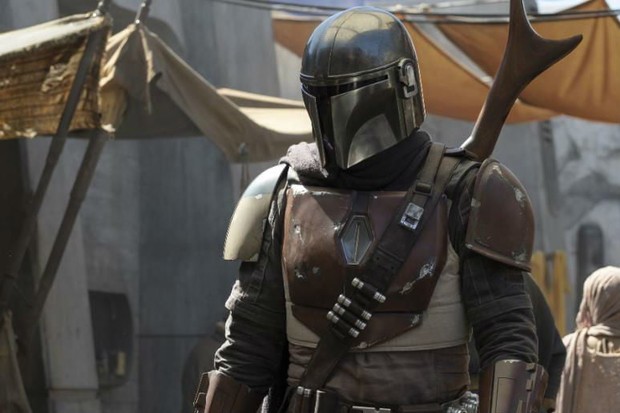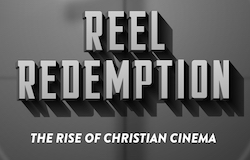Bountiful Hunter, by Bob Connally
25 Nov

The first time the Star Wars universe extended to the world of television was in November of 1978. The Star Wars Holiday Special remains one of the most baffling TV programs ever produced. Between several minutes of Wookiee growling, the bizarre and misguided scene with Diahann Carroll, and, “Stir, whip, stir, whip, whip, whip, stir,” it’s like watching a train crash into an orphanage that was already on fire. There is, however, one part of the show that those of us who have subjected ourselves to it must admit isn’t entirely a disaster. While the cartoon short that introduced Boba Fett a year and a half prior to The Empire Strikes Back has strange and unpleasant looking animation – what’s with the chins? – it’s not a bad story. It gave fans their first look at the Mandalorian armor of the bounty hunter who would go on to capture Han Solo before dying in the most embarrassing way possible. (Yes, I know that according to the extended universe he climbed out of the Sarlacc pit but, to anyone watching Return of the Jedi in 1983, Boba Fett was dead. In the most embarrassing way possible.)
The fan obsession with Boba Fett has always had more to do with the costume than the character, so when it was announced that the first live-action Star Wars television series would be titled The Mandalorian, I was decidedly skeptical. Thankfully Boba Fett would not be the protagonist, but the show would still have a faceless character as its lead; a decidedly risky decision. So, three episodes in, how is the show faring? Pretty well, as it turns out, though it still has plenty of room to grow.
The opening scene of the first episode nicely sets up the Western tone that was part of the stew of genres that made up the original film, but has not really been present in the series since. It also introduces our faceless protagonist as a man of few words, but one of decisive action. Mando (Pedro Pascal) is not one to ask questions about the bounties he captures. For him it’s simply his job and he wants to take as many assignments as he can get. Many of the scenes to follow are laden with visual and aural references to the films of the original trilogy (to an honestly nauseating degree). Thankfully, this seems to be top-heavy, as the references have become toned down since about the halfway point of the first episode.
The series opener ends with a well-executed shootout involving Mando and a bounty droid by the name of IG-11 (voiced by Taika Waititi) which leads into a final scene that flips the one thing we know about Mando on its ear. There is a line that he won’t cross, which is killing a small fifty-year-old baby who looks a whole lot like Yoda. The two episodes that have followed have focused primarily on Mando’s choice to take Baby Yoda back with him alive and his ultimate decision to not allow the Client (Werner Herzog) to presumably murder the child.
One of the more notable aspects of The Mandalorian thus far is the relatively short episode lengths. Each one has run only between 30 and 40 minutes. To me, this is a positive. There’s a strong focus on Mando and his story. Any other characters we meet are there in service of that story. This is not to say that those characters are not interesting. The Client, Greef Karga (Carl Weathers), and Kuiil (voiced by Nick Nolte) are all intriguing, and series creator Jon Favreau is doing a nice job of making us want to learn more about them.
The real question though is how much can an audience connect with a protagonist who says little and whose face is never seen. We’re left to guess what Mando may be thinking from moment to moment, though with the limited tools at his disposal, Pascal does his best to convey Mando’s personality. His relationship with Baby Yoda demonstrates a sense of compassion and some of Pascal’s line deliveries convey a dry sense of humor. Already those things make him far more interesting than Boba Fett ever was. The mask allows Mando to keep his emotions close to the vest, which he most certainly must feel is to his advantage. Pascal’s physicality is essential in a key scene in episode 3, when we see his hand shaking as he contemplates taking off in his ship or going back to rescue Baby Yoda. As far as connecting with Mando, though, what we primarily have to go on are his actions. Risking his reputation, his future employment as a bounty hunter, and his life for a 50 year old baby he knows nothing about tells us a lot. Hopefully whatever barriers the audience may still feel are between us and Mando will be broken as the series progresses.
Anyone who has been on the internet the past couple of weeks has seen the countless Baby Yoda memes and gifs. He or she has become the new obsession of the Star Wars fandom and no one has any trouble understanding Baby Yoda’s facial expressions. All we really know thus far is that Baby Yoda has raw, untrained Force power and that whatever his/her race is, they age much more slowly than humans do. Much like the other elements of The Mandalorian, Baby Yoda has the audience intrigued and waiting with bated breath to learn more.
There are five episodes left in this first season of The Mandalorian, which, based on the episode lengths thus far, suggests we have between about three hours left before the hiatus. I suspect the sense of focus that has been established will be maintained and I’m very curious to see where Favreau takes the story from here. So far, it’s been a little rough around the edges and the jury is still out about a protagonist without a face but there is a lot to like here and there are reasons to be invested in the show’s future. Given how divisive the films have become, Star Wars needs something that unites the fans in a positive way. Right now it looks like The Mandalorian could end up being just that.



No comments yet